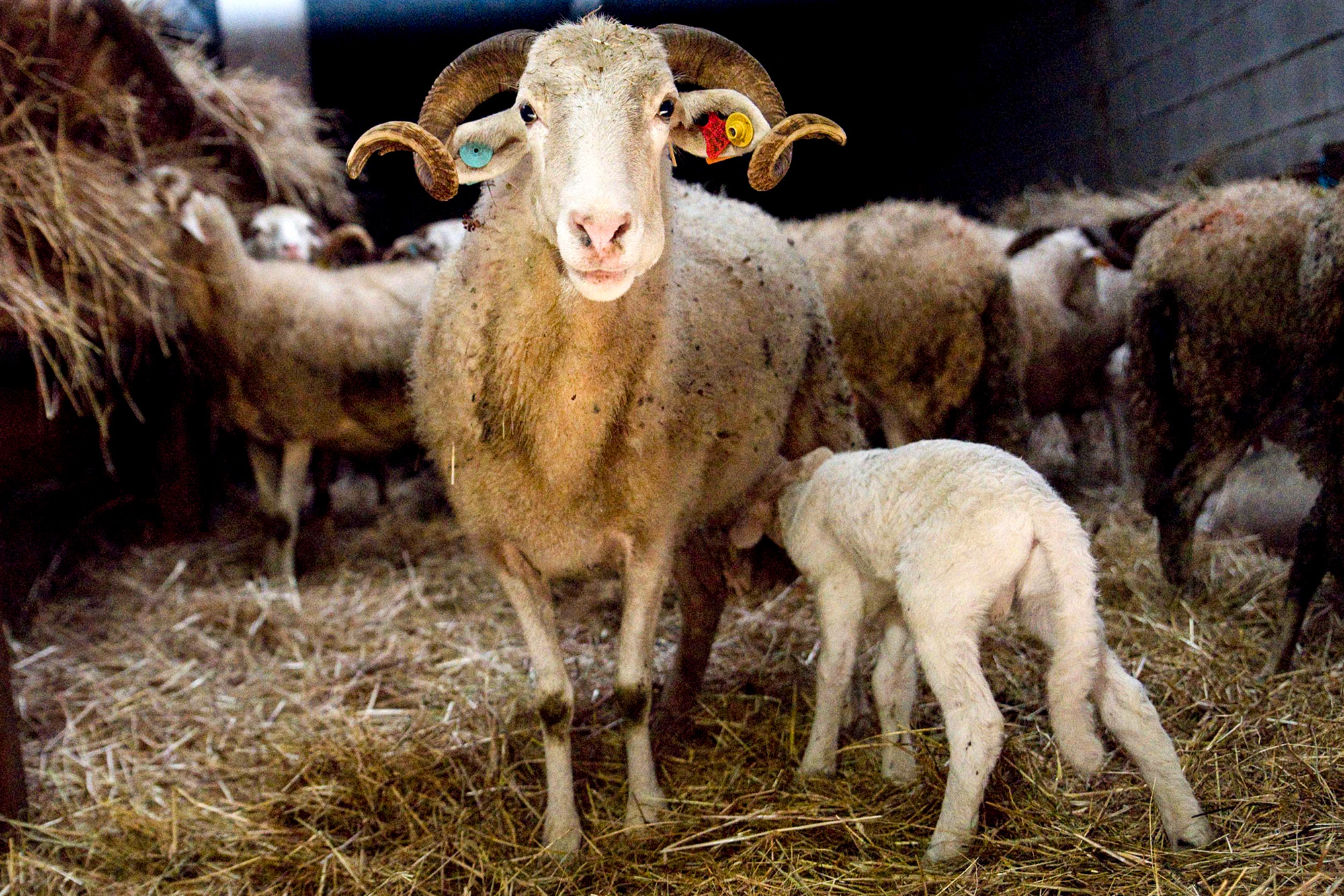Serra da Estrela Sheep Interpretative Centre


Are there rivers in Beira? They descend from the Estrela Mountain. Is there cheese in Beira? It’s made in the Estrela. Is there cloth in Beira? It’s woven in the Estrela. Is there wind in Beira? The Estrela blows it. (...) Everything is born from it.
Miguel Torga (1907-1995)
In Santa Marinha, Seia, nestled among boulders and memories, stands an 18th-century building that once served as Town Hall, courthouse, and prison. Three centuries of history are preserved within these stone walls, now telling a new story: that of the Serra da Estrela Sheep and those who guide it with their hands, their bodies, and their time. Here, history becomes tangible. Across three floors, visitors are immersed in a raw, sensory experience – from wool to milk, from pasture to the dignity of those who care.
Santa Marinha once sat at the heart of an empire. Here, the paths of agriculture, shepherding, and wool converged. A land of transhumance, always in passage, always in permanence. The Interpretive Centre of the Serra da Estrela Sheep was created in 2023 to honour the region, the sheep, and the shepherds. It is a joint initiative by the Bread Museum and the Casa Portuguesa do Pastel de Bacalhau, whose social economy projects value their origins and the Serra da Estrela, dignifying the work of shepherds who keep the mountain alive.
Because to preserve is not to freeze in time. It is to give continuity.
The Serra da Estrela Sheep
It was born in the mountain and inherited the name of the mountain that saw it grow. For thousands of years, it has accompanied the shepherd – from the transhumance trails to the terraces of the Estrela.
Shaped by time and by the harshness of the land, the Serra da Estrela Sheep is much more than an animal: it is identity.
It is believed to have arrived in the Iberian Peninsula around 5,000 B.C., coming from the Middle East, and since then it has become a key element of life in the mountains – not only economically, but also culturally. In the 20th century, a genealogical record was created, reproduction was regulated, and today the breed is protected and valued. There are around 21,500 Serra da Estrela sheep, cared for by 260 shepherds.
It is the breed with the highest dairy aptitude in the country. From its milk is born the famous Serra da Estrela PDO Cheese. And with it, ancient crafts survive: the shepherd, the cheesemaker, the breeder, the weaver, the farmer. People who have turned know-how into a way of life.
The two economies of the Sheep

Serra da Estrela PDO Cheese
It all starts in the pasture. The sheep is milked and the milk is taken to the cheese dairy. There it is curdled using thistle flower and salt, then poured into cloths and “cinchos” to separate the curd from the whey. It is pressed and left to mature in cool, shaded places for 30 to 40 days, being turned and washed by hand daily. When young, it has a creamy texture and tangy flavour. Over time, it becomes firmer, more intense and spicier - that’s the “Queijo Velho”.
Serra da Estrela Cheese has Protected Designation of Origin (PDO), a certification that ensures its authenticity. It was elected one of Portugal’s 7 Wonders of Gastronomy and is still made today as it always has been: milk, thistle flower, salt and hands that know the right moment to milk, press, turn, wash and wait. All the rest is soul.

Wool: from shearing to skein
For centuries, shepherds have used it to make burel cloth - warm, durable and made to last. It was with this cloth that they faced the cold, the wind and the mountain's harsh seasons.
Everything begins in spring, with shearing. The wool is cut close to the skin, making the most of the fibre's length. Then, the best fleece is selected according to its fineness and the purpose it will serve. It is then washed to remove dust, natural oils and plant matter, followed by carding - the fibres are separated and untangled with two brushes moving in opposite directions.
Next comes spinning - the fibres are twisted and stretched until they take the form of yarn, which can be twisted again to gain strength. The skeins are then washed and prepared to be dyed. Finally, the yarns are transferred to the yarn winder: a wooden tool that turns them into skeins ready to be woven or knitted.
This is wool: simplicity, resilience, and ancestral wisdom still spun today by the hands of those born with the craft.
Opening hours
Saturday and Sunday from 10am to 6pm
Transhumance
Serra da Estrela is the last living stronghold of transhumance in Portugal.
This ancestral movement, transhumance, still today leads flocks in search of fresh pastures at different altitudes, following the rhythms of the seasons. For centuries, transhumance traced routes, connected communities and shaped the landscape. In summer, shepherds would climb the mountains, sleep in huts and store their bread in granite rocks – the “Bread Arks”. In winter, they would descend with the sheep to the valleys, in a harsh journey that took several days. After a long decline, transhumance is now starting to revive – with new shepherds, new routes and the same desire to keep alive a tradition that defines this land and the knowledge of those who live in it.


The Shepherd
The shepherd of Serra da Estrela has endured centuries of harsh winters, long droughts and short promises. Among flocks, transhumance and solitude, he kept alive one of the oldest practices in the world: shepherding.
Many inherited the craft from parents and grandparents. They own small flocks, work out of passion, and sacrifice themselves every day for a knowledge that can’t be learned from books. Portuguese literature acknowledged their place. They were sung in medieval songs, in Gil Vicente’s plays, and in the pastoral poetry of the 15th and 16th centuries. They were called “lords of freedom,” even when life was made of silence and stone.
Today, they still head into the mountains, with their Serra da Estrela dog at their side and a crook in hand. They graze their flocks in natural meadows, just as it’s always been done. They sit on a throne of stone, watching life rise along the slopes – as Oliveira Martins once wrote. They are the guardians of the mountain, the sheep, the cheese, and all that endures.

Address and Contacts
Rua da Igreja 36, Largo do Pelourinho
6270-196 Santa Marinha, Seia
+351 910 296 326
(Call to the national mobile phone network)
